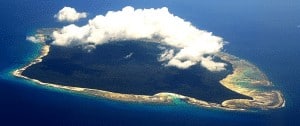The Last Island (2023) Shares the Fascinating History of an Uncontacted Tribe
The Sentinelese people seem like anachronisms in the modern world. Living on North Sentinel Island, part of India’s remote Andaman and Nicobar Islands, the Sentinelese have resisted outsiders trying to colonize, convert, or modernize them for centuries. They instead maintain their traditions and defend their isolation from the outside world.
What are the Sentinelese like? Why are they so hostile towards outsiders? How have they resisted massive forces of change for so long? In The Last Island (2023), historian and travel writer Adam Goodheart investigates these questions; in doing so, he provides a captivating look into one of the most elusive uncontacted tribes on Earth.
The Last Island Tells About Those Who Tried to Reach Out to the Sentinelese
https://gty.im/1064037894
In The Last Island, Goodheart approaches his topic from multiple angles to give the fullest possible picture of a people we still know little about.
Goodheart tells about two outsiders who attempted to establish contact with the Sentinelese. In 1998 and 2020, Goodheart tried to reach the island with the help of local Indian sailors, but they only ended up viewing the people on the shore from afar before turning back. In 2018, American missionary John Allen Chau traveled to the island because he wanted to convert the Sentinelese to Christianity; the Sentinelese shot him to death with arrows as he approached the island.
Goodheart also explains how British colonists and Indian government officials both failed to impose their economic and cultural control on the Sentinelese and other Andamanese tribes. British colonizers set up settlements on certain islands but regularly fought with indigenous peoples living further inland. After failing to integrate the Andamanese into wider Indian culture, the postcolonial Indian government made the Andamanese people protected minority groups and banned outsiders from visiting North Sentinel Island.
Finally, Goodheart details certain Andamanese cultural practices and beliefs, based on the limited information that outsiders have been able to gather about them. For instance, some Andamanese groups wear the skulls of dead relatives on their backs, while others view time cyclically, perceiving past, present, and future events as if they’re occurring simultaneously.
The Last Island is About Understanding and Appreciating the Sentinelese
Despite working with fairly limited direct knowledge of the tribe’s culture, language, and lives, Goodheart effectively synthesizes various sources about the Sentinelese people to show how they’ve managed to preserve their unique way of life despite many pressures from the outside world. He also examines some past and current threats to their continued independence and survival, such as the introduction of diseases that they lack natural immunity towards, the Indian government’s plans for more economic development and construction on the Nicobar Islands, and the effects of climate change.
What really elevates The Last Island is that Goodheart challenges long-held colonial- and even modern-era beliefs that the Sentinelese or any uncontacted tribe is more primitive or less civilized than any other culture. Even though they live isolated from other societies, wear minimal clothing, still use spears and rocks to defend their home, and lack many modern technologies and amenities, Goodheart argues that the Sentinelese are as complex a society as any other, with their own cultural norms, forms of communication, and tools for survival, and their culture should be respected and appreciated just like any other.
Final Thoughts
The Last Island provides excellent insight into the culture and history of the Andaman Islands and its indigenous peoples. Goodheart’s discussion of the outsiders who tried to contact the Sentinelese makes it clear why so many people are fascinated by uncontacted peoples, while his defense of the Andamanese people against claims that they’re primitive or uncivilized makes a strong case about appreciating the value of every individual culture in the world.
The Last Island will appeal to any reader who wants to learn about one of the world’s least understood cultures. The book will also inspire them to continue learning more about these incredible uncontacted tribes.
If you’re interested in more articles about India, check out this one about a documentary that follows a mother Bengal tiger and her cubs journeying through the country’s wilderness.
If you want to know how you can better evaluate the news you read, check out this article about World Press Freedom Day.
For More Great Content
Total Apex is an all-encompassing content producer. We provide heavily detailed articles every day on entertainment, gaming, sports, and so much more! For more exemplary gaming and entertainment content, read our daily content on these sites: Total Apex Gaming and Total Apex Entertainment.
About the Author
Nick Thrailkill loves reading and writing about both fiction and nonfiction. He likes to craft stories and articles to entertain readers and get them to think more deeply about the world around them. When he’s not reading or writing, Nick can usually be found exploring the outdoors or teaching visitors about wolves at the Wolf Sanctuary of PA. Check out more of his writing on Total Apex Entertainment here.







